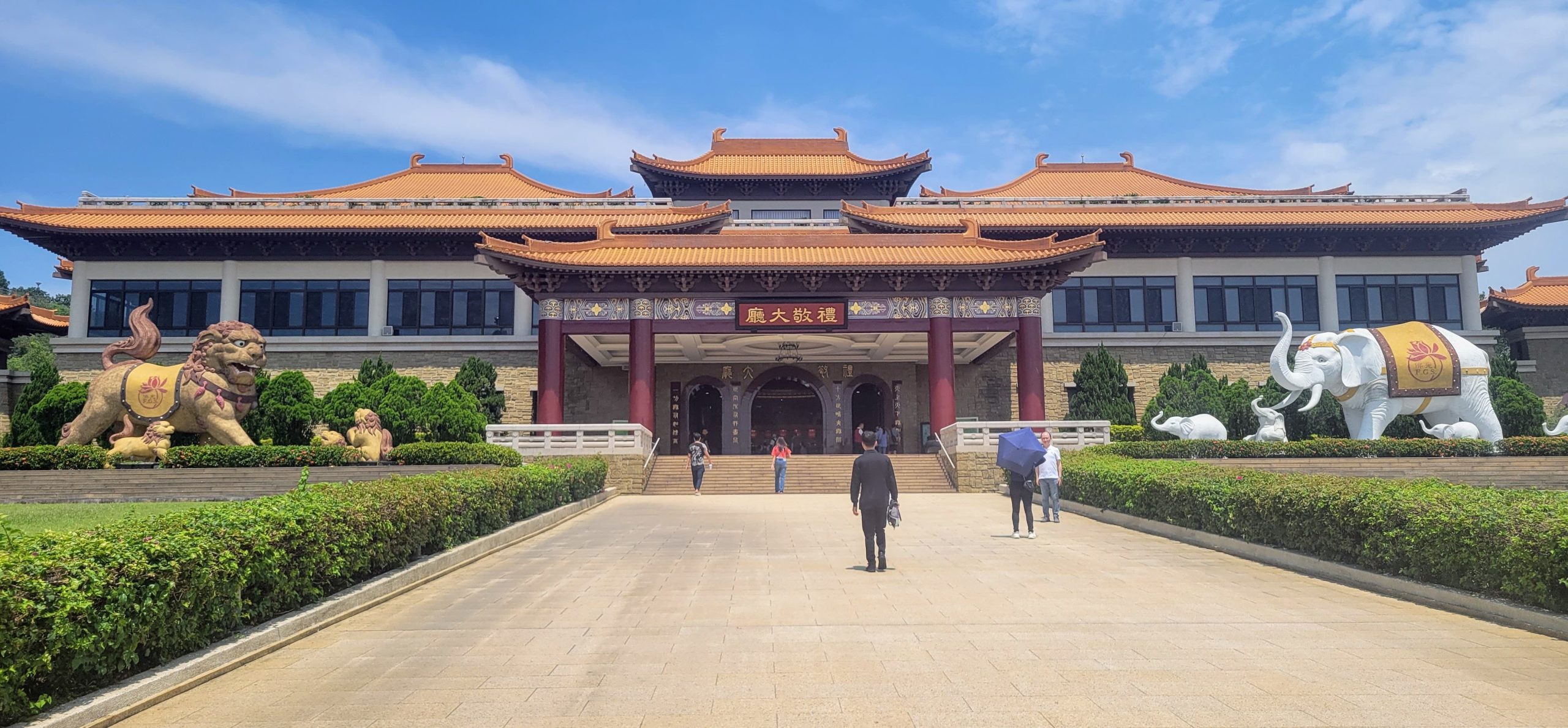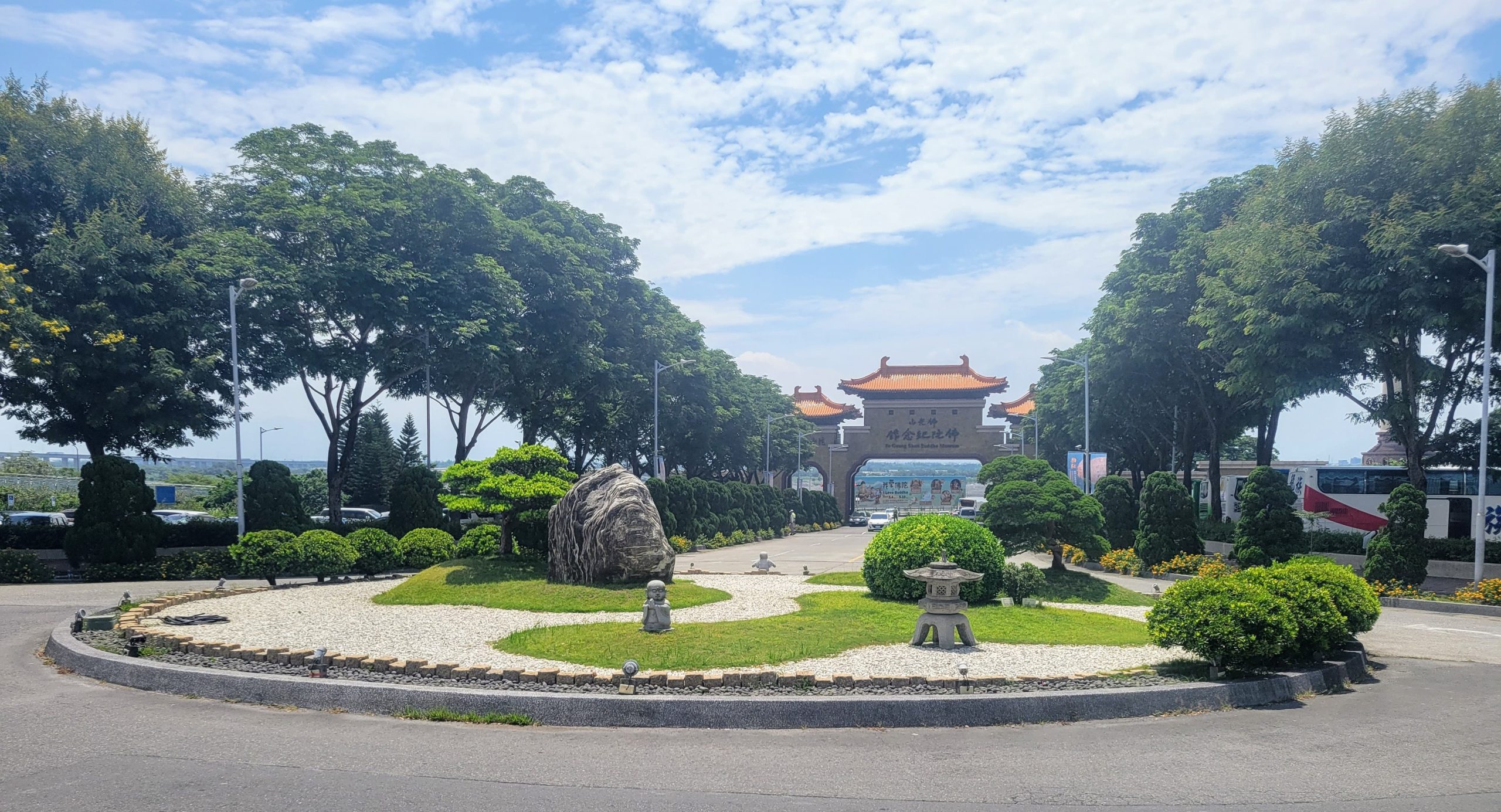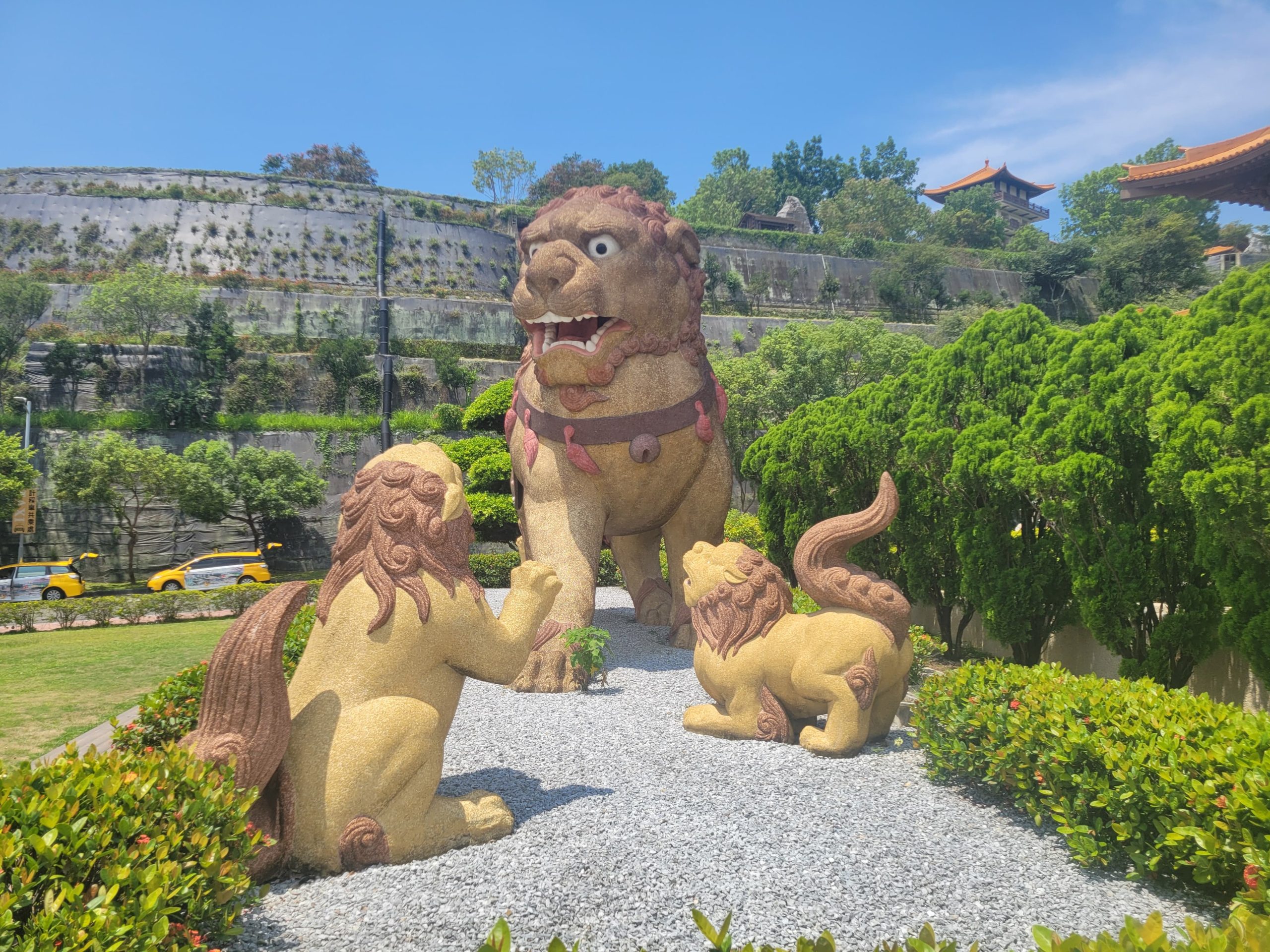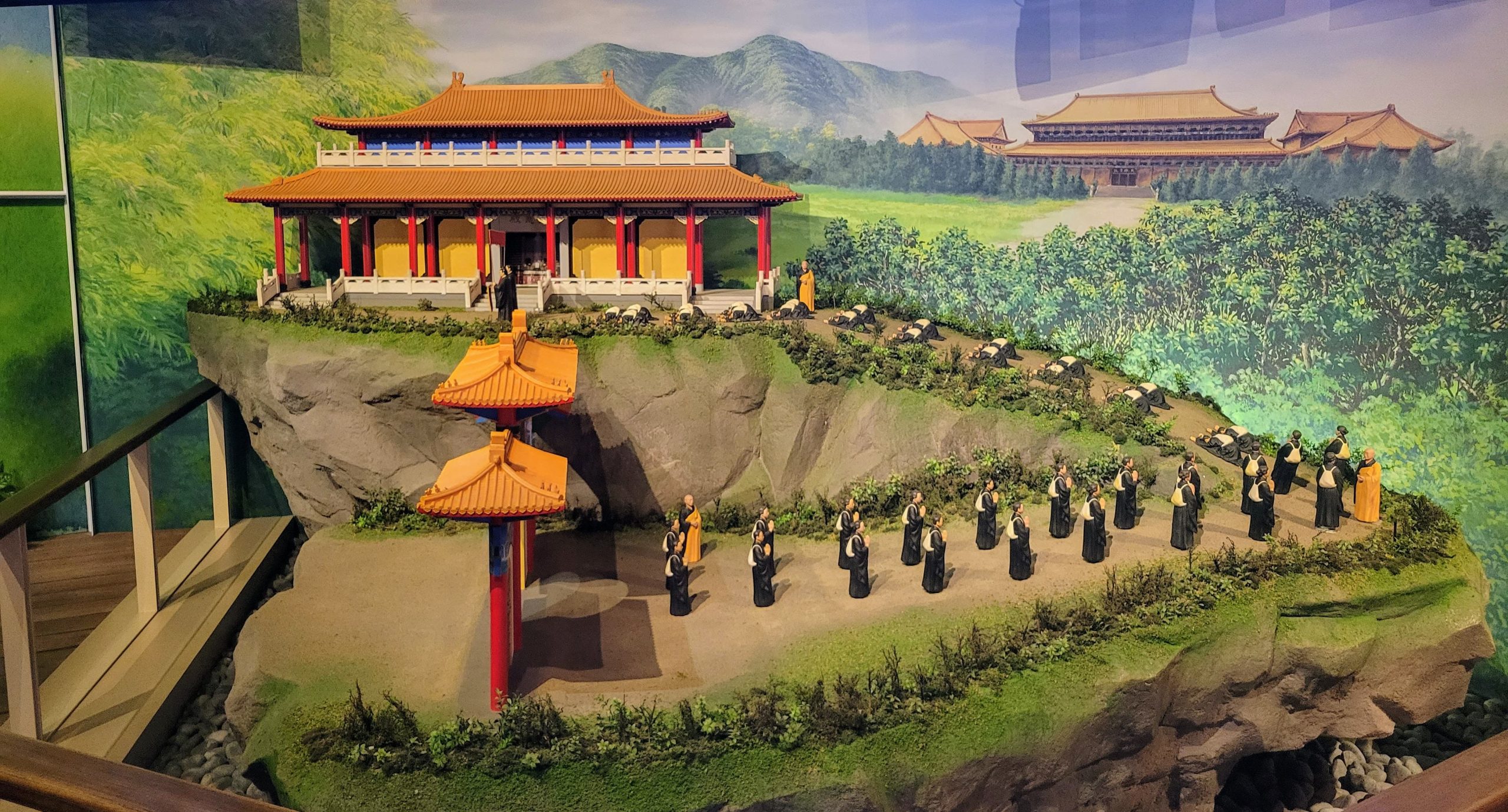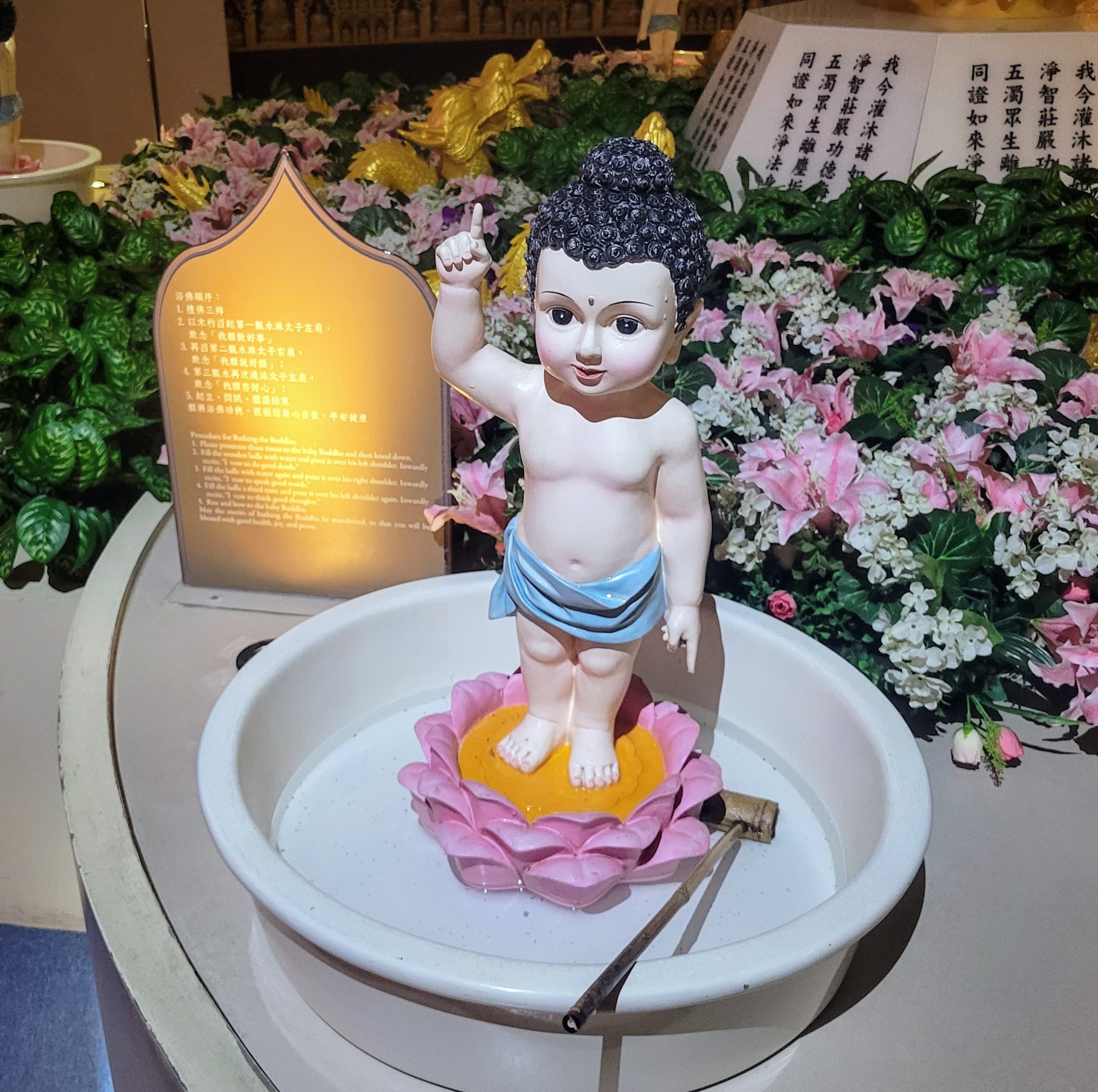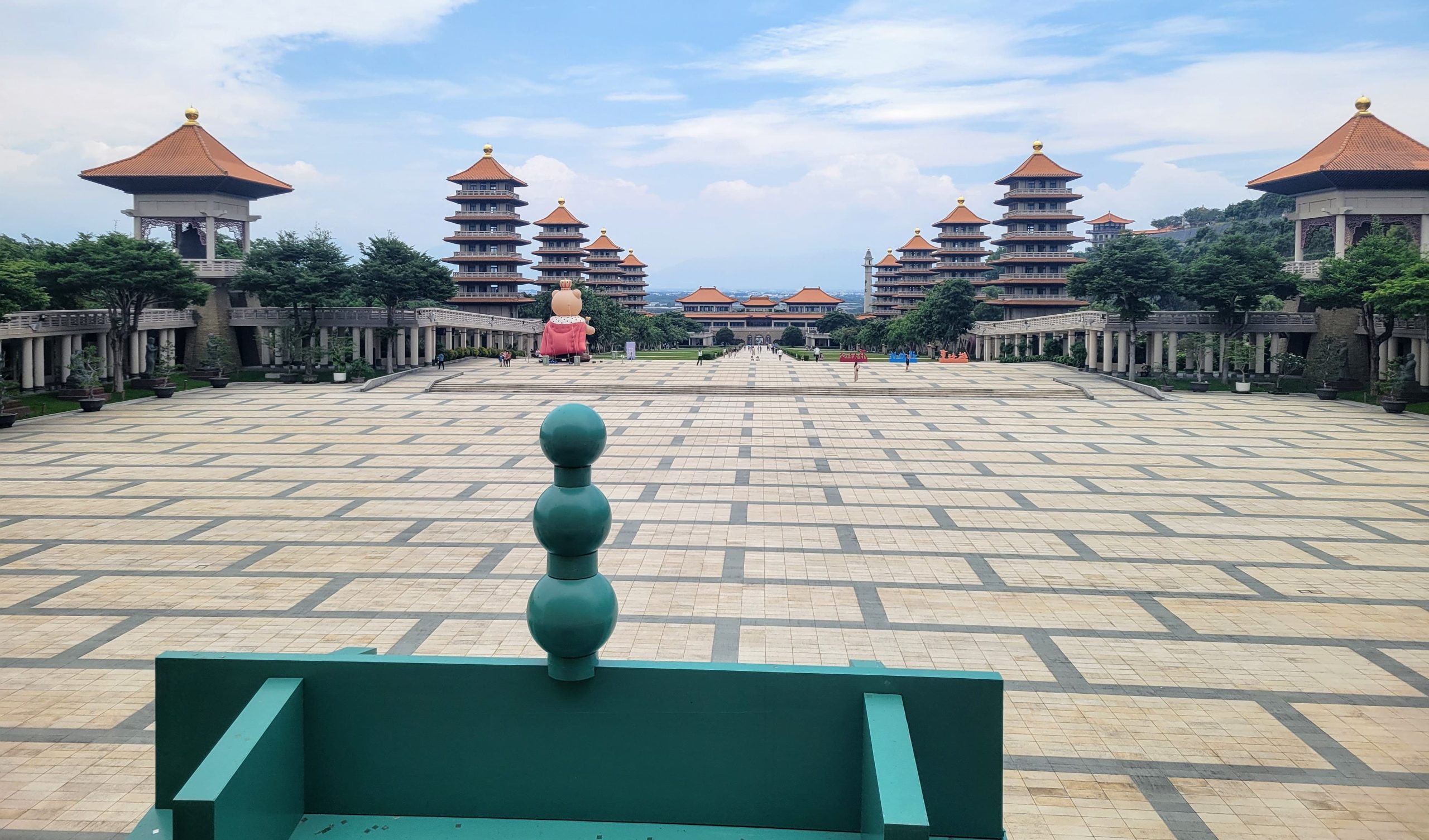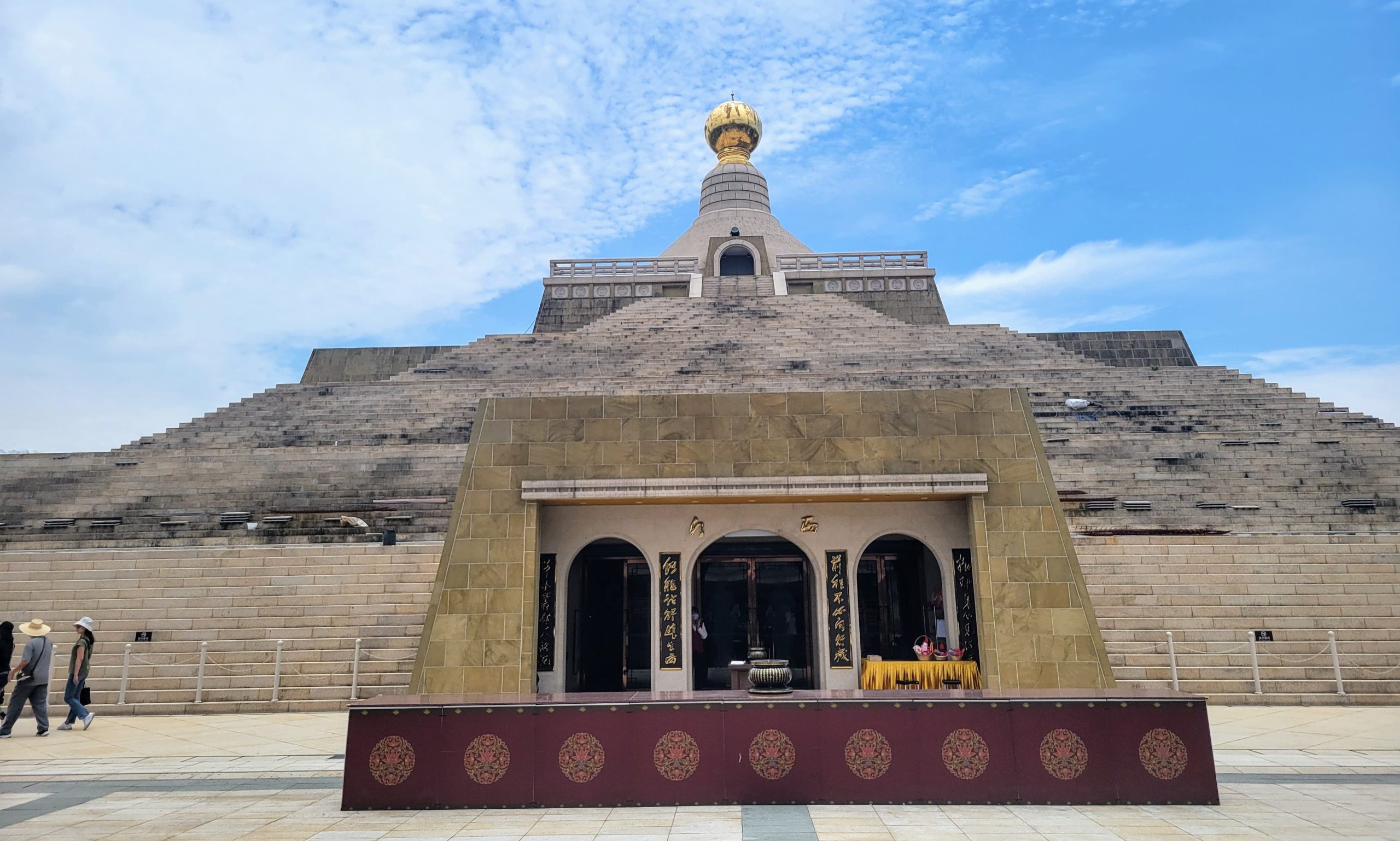This guide will help you decide if Fo Guang Shan in Kaohsiung is worth visiting. Based on my experience, I’ll share useful insights.
I’ve always been interested in Buddhist temples. For our anniversary, my wife and I visited Kaohsiung to see Fo Guang Shan.
Now, I want to share my experience and help you decide if it’s worth your time.
Is Fo Guang Shan Worth Visiting?
Fo Guang Shan is worth visiting if you enjoy Asian architecture or have an interest in Buddhism. Otherwise, the location is a bit remote, and it may not be ideal if you have kids. Many areas are quiet, with fragile displays, and children may find it boring.
As many areas throughout the museum are quiet and have fragile displays. Plus, your kids would probably get bored.
I’m biased because I’ve wanted to visit for years. But the points above may help you decide.
When you first enter the Front Hall, you might be surprised. It feels more like a typical shopping center than a Buddhist monastery.
I didn’t expect this, but it was “interesting.”
Here’s a map that’ll also make your life easier.
Fo Guang Shan Map
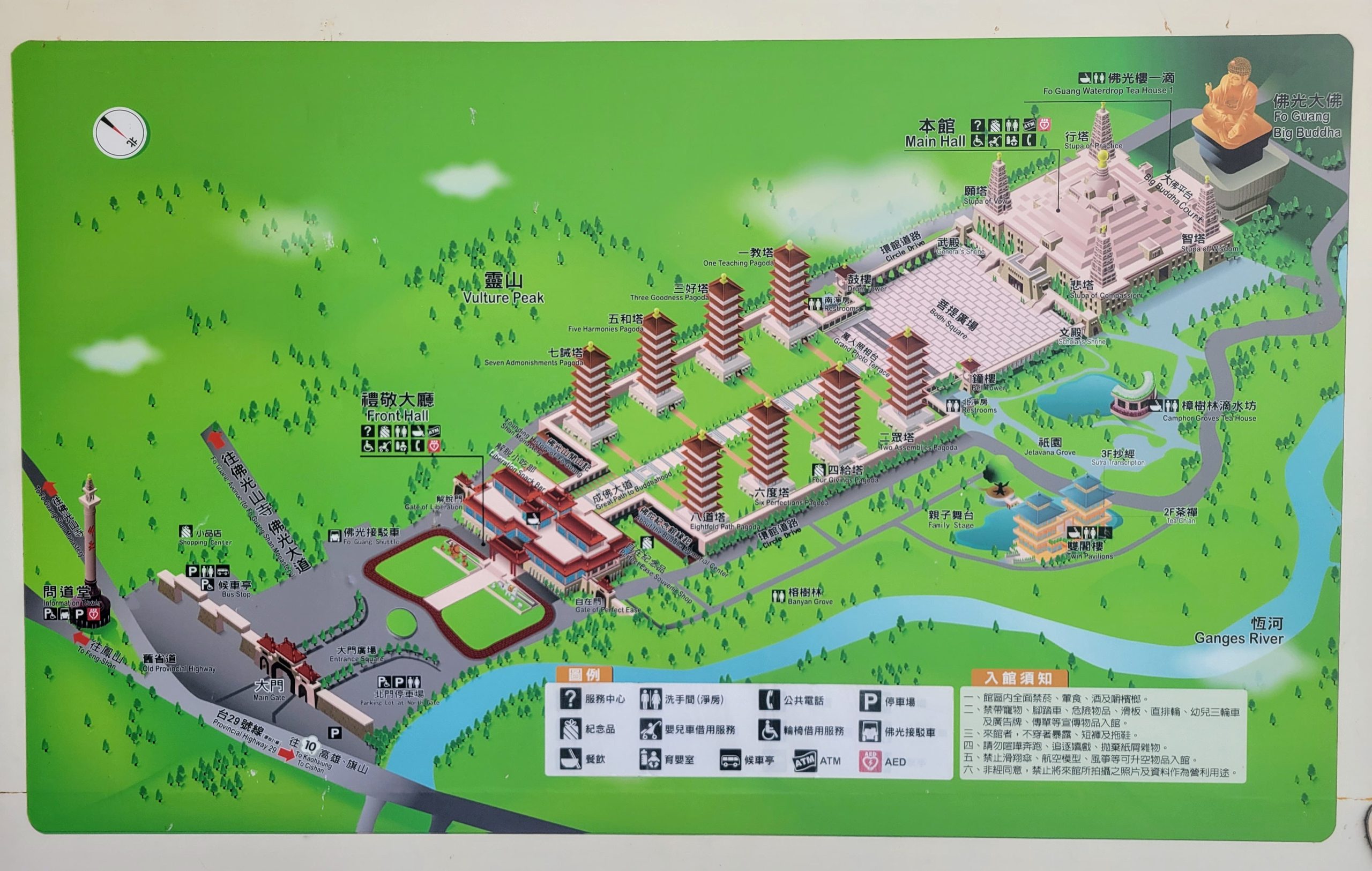
How to Get to Fo Guang Shan
You can reach Fo Guang Shan by driving or taking the bus.
I’ve written a separate guide on renting cars in Taiwan.
Once you’ve got a car, use a maps app for directions.
Otherwise, here are the bus routes:
1. From Zuoying HSR Station.
Take the Harvard Express (哈佛快線), which is a 30-minute ride directly to the Buddha Museum.
Here’s the bus schedule and station location.
My wife and I took this bus immediately after getting off the Taiwan High Speed Rail.
I highly recommend taking the HSR to Kaohsiung.
It saved us time, and we had a pleasant ride. If you book at the right time, you can also get a discount.
2. From Fengshan Railway Station.
Take the Dashu Blessing Bus (大樹祈福線). This route takes about an hour to reach the museum.
Here’s the timetable for Dashu.
3. Kaohsiung Railway Station.
Take buses 8009 or 8010 to Fo Guang Shan. Click the links for timetables to each.
Or:
Alternatively, you can take a taxi or Uber.
This option costs more, but you won’t have to deal with crowded buses.
What You’ll Find in Fo Guang Shan
In this section, I’ll break down the main areas of Fo Guang Shan and offer tips for your visit.
I’m focusing on the areas within the monastery grounds, not external sites like Vulture Peak or the Camphor Groves Tea House.
Let’s begin with the entrance.
1. Entrance
This is where you’ll arrive. There’s a small shopping area and a food stand at the bus stop, which mostly sells deep-fried foods. Not ideal for a hot day like when I visited.
You’ll also find some statues worth taking photos of, but there isn’t much else here.
Let’s head inside the Front Hall.
2. Front Hall
You’ll find English-speaking guides who also speak Mandarin at the entrance.
When I walked inside, I felt like I was in a mall.
Here, you can eat or shop for souvenirs. There’s even a Starbucks. The restaurants are all vegetarian, as Mahāyāna Buddhists promote vegetarianism.
I suggest buying your souvenirs when you’re leaving. You won’t want to carry them around while exploring.
Once you’ve cooled down a bit, head back outside.
3. Courtyard
This was my favorite part of the monastery, mostly because of the architecture.
When you leave the Front Hall, walk down the Great Path to Buddhahood. It’s a peaceful path with great views for photos.
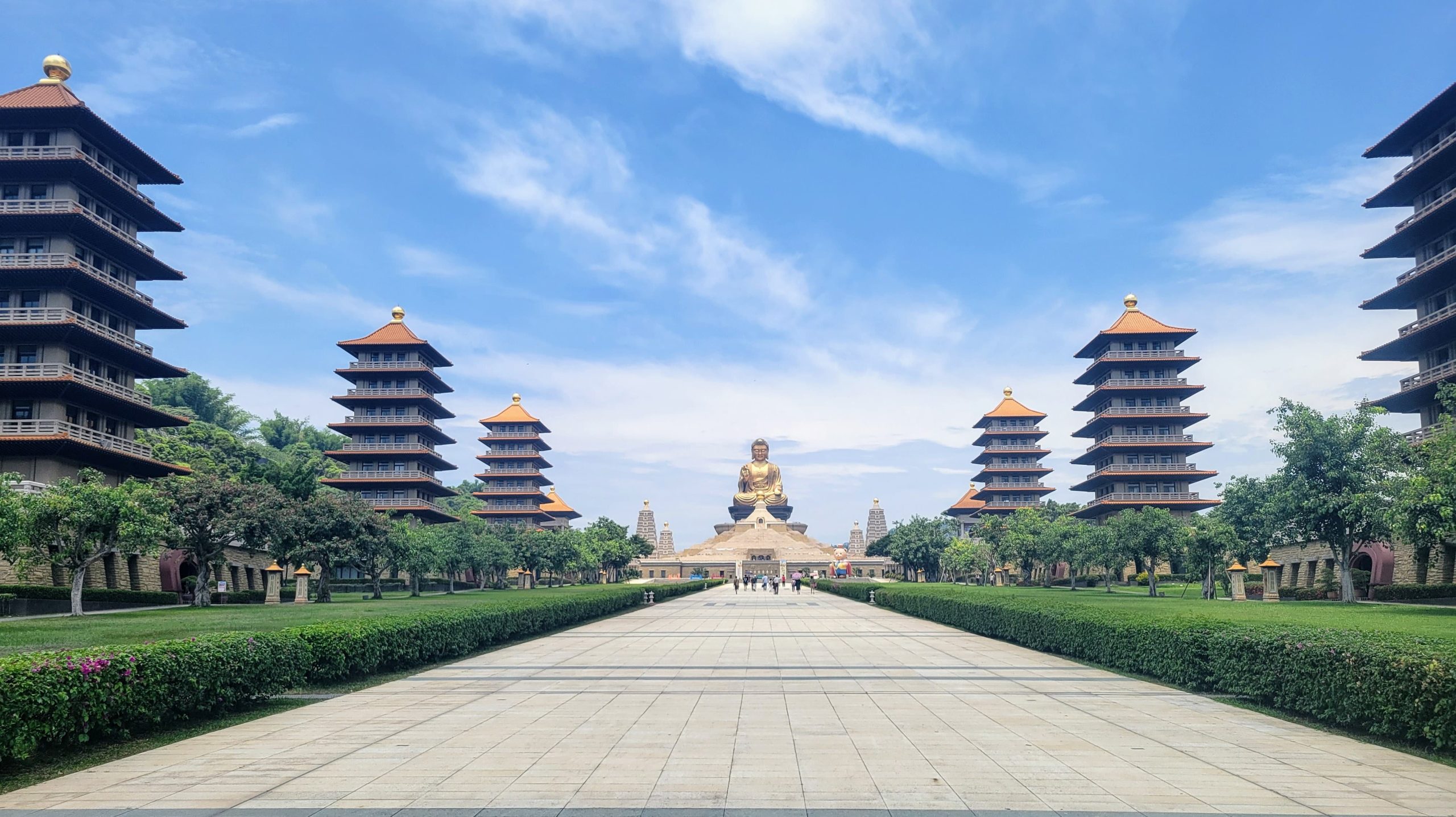
But be prepared for the sun — there’s no shade. Bring a hat and use sunscreen.
Along the path, you’ll see Bougainvillea flowers. Some say they symbolize purity and enlightenment, but others think they’re just ornamental.
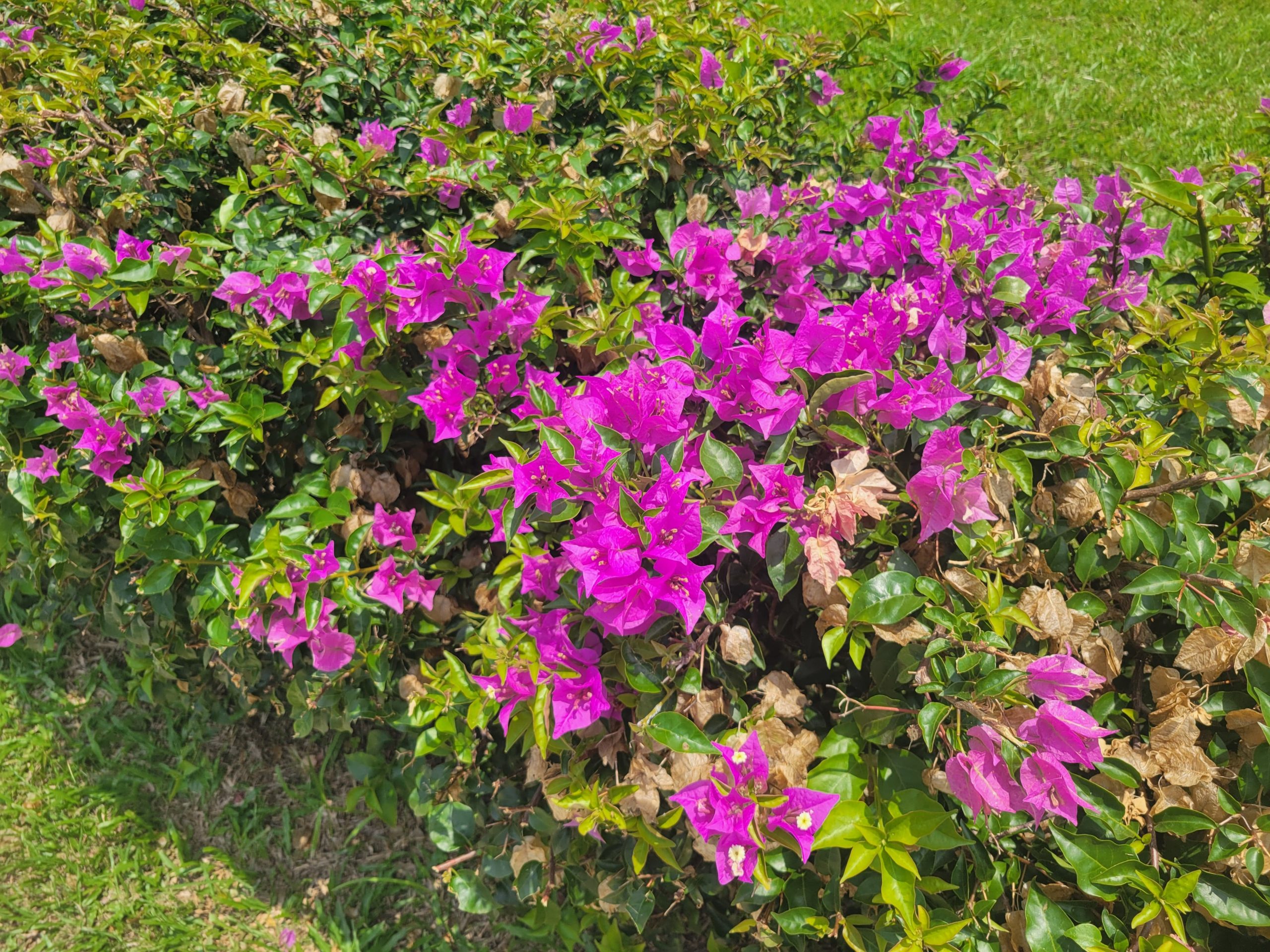
For shade, take the covered path leading to Bodhi Square.
Regardless:
You’ll see the following 38-meter-high pagodas:
- One Teaching
- Two Assemblies
- Three Goodness
- Four Givings
- Five Harmonies
- Six Perfections
- Seven Admonishments
- Eightfold Path
They symbolize the spread of Buddhism from India and China. Each building also has different “themes.” The one pagoda my wife and I went to also apparently served as a wedding venue.
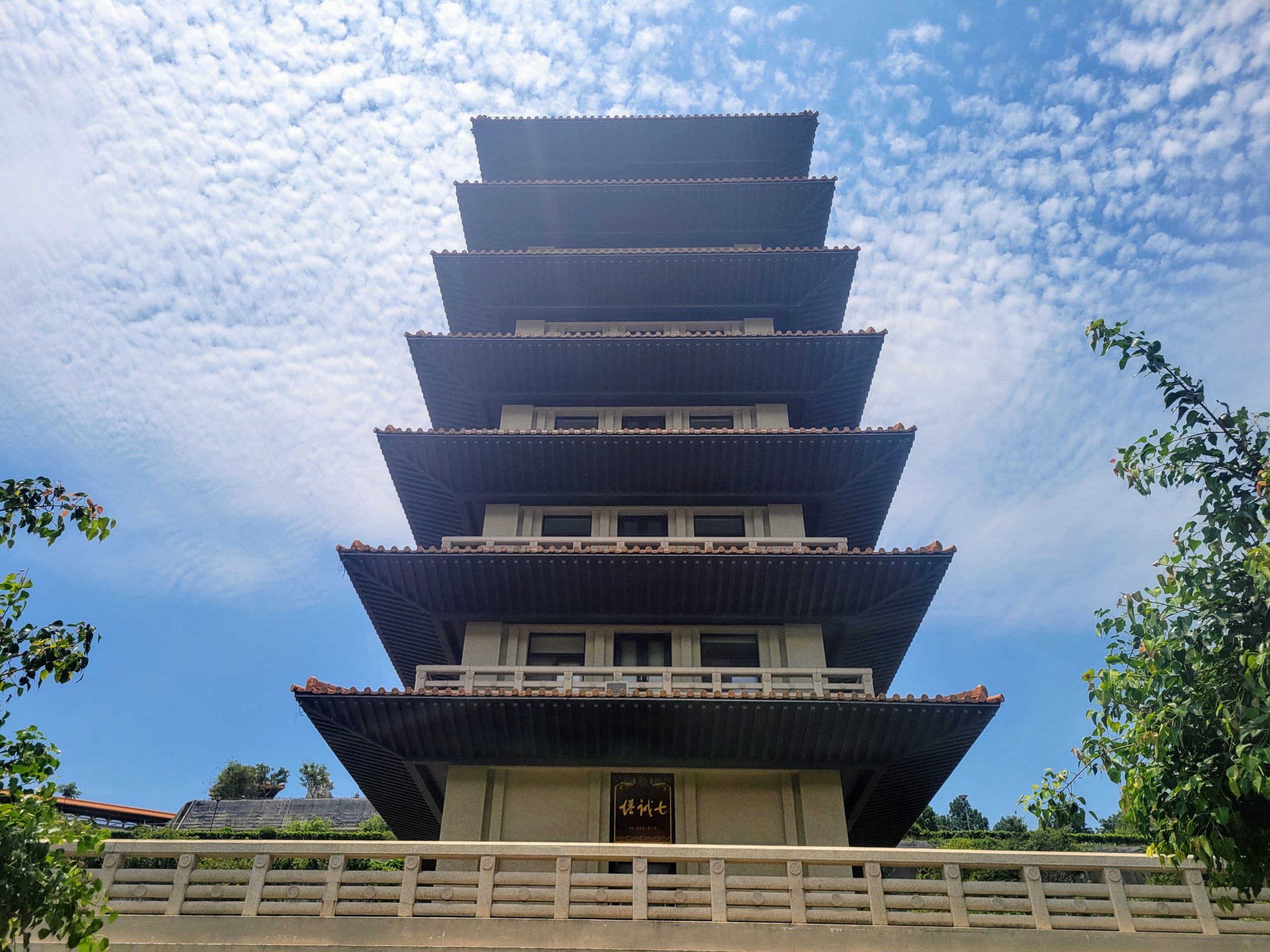
At the end of the Great Path, you’ll find the Grand Photo Terrace. Can you guess what you’d do here?
Take pictures.
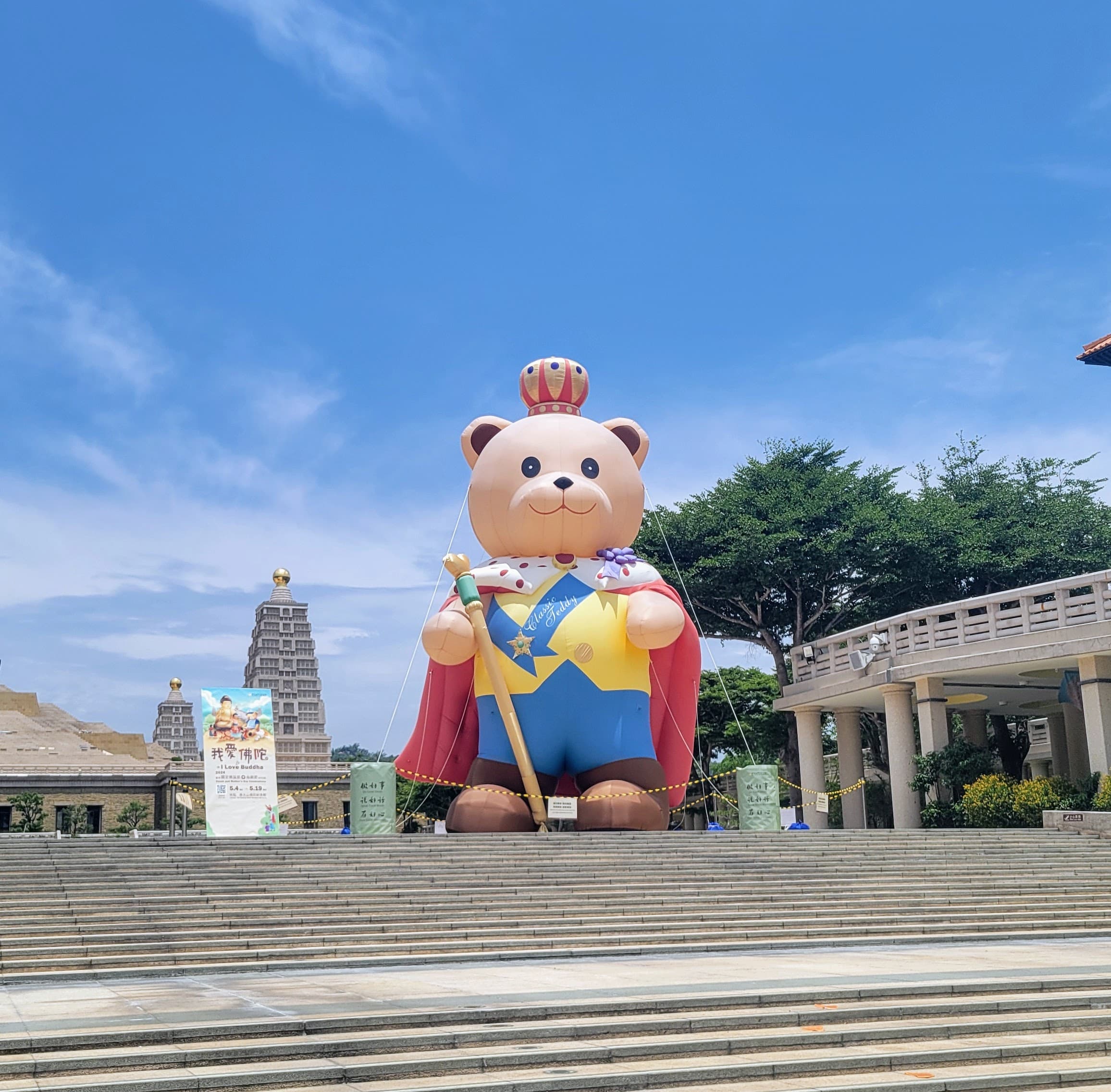
The same goes for Bodhi Square.
Bodhi Square has a Drum and Bell tower on each side. They’re mainly good photo spots. From here, you can enter the museum or visit the Big Buddha.
Let’s talk about the Big Buddha first.
You’ll hike up stairs until reaching the top of the buildings, where you’ll see these Noble Truths Stupas:
- Vow
- Practice
- Wisdom
- Compassion
These commemorate Buddha’s first teachings. You can’t enter them, though.
You’ll eventually find yourself in front of the Big Buddha:
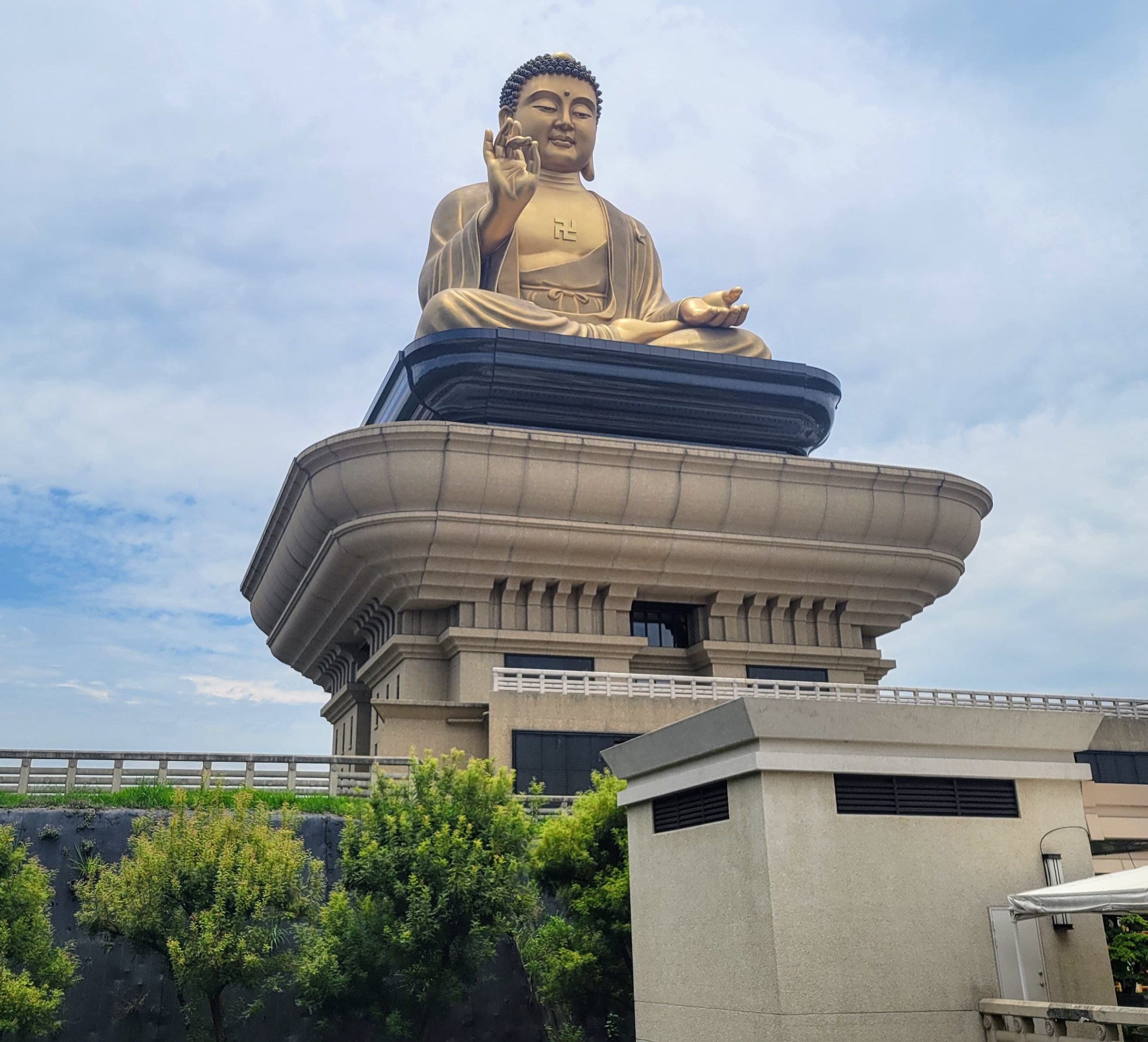
Finally, you’ll reach the Big Buddha. There isn’t much to do here except take a cool picture. If you’re hungry or thirsty, you can grab something inside..
Or head back downstairs into the museum.
4. Museum / Main Hall
My wife and I visited on International Museum Day (May 18th) and participated in a scavenger hunt. We collected stamps from exhibits, and at the end, we got free cake.
The cake wasn’t bad.
You likely won’t come here during that day. What should you do, then?
I’m not the biggest museum connoisseur, but here are some interesting areas to check out:
- Jade Buddha Shrine
- Golden Buddha Shrine
- Tiny buddha statues (pour water over these for good luck)
- One of the 3 remaining tooth relics on Earth
This is the relic:
I didn’t research before visiting, and I wish I had. The tooth relic would have been neat to see, but it’s one of those things you look at for a minute and say, “Oh, cool.”
Still, it’s supposedly one of the few places containing the sanctified remains of an enlightened person.
Don’t miss out like I did.
Once you’re done at the museum, make the mistake of buying a lot of things.
Best Souvenirs at Fo Guang Shan
When entering or leaving Fo Guang Shan, you’ll notice many souvenir shops.
Here are the souvenirs I actually recommend getting:
- Keychains
- Charms
- Pins
- Incense and incense holders
- Starbucks mugs
Before reading on, I’d recommend reading these guides to help you plan how to how to organize your luggage:
Did you ever think you’d see “Starbucks” and “Buddhism” in the same sentence?
Now you have.
If you’re a mug collector, get one from the Starbucks at the entrance building.
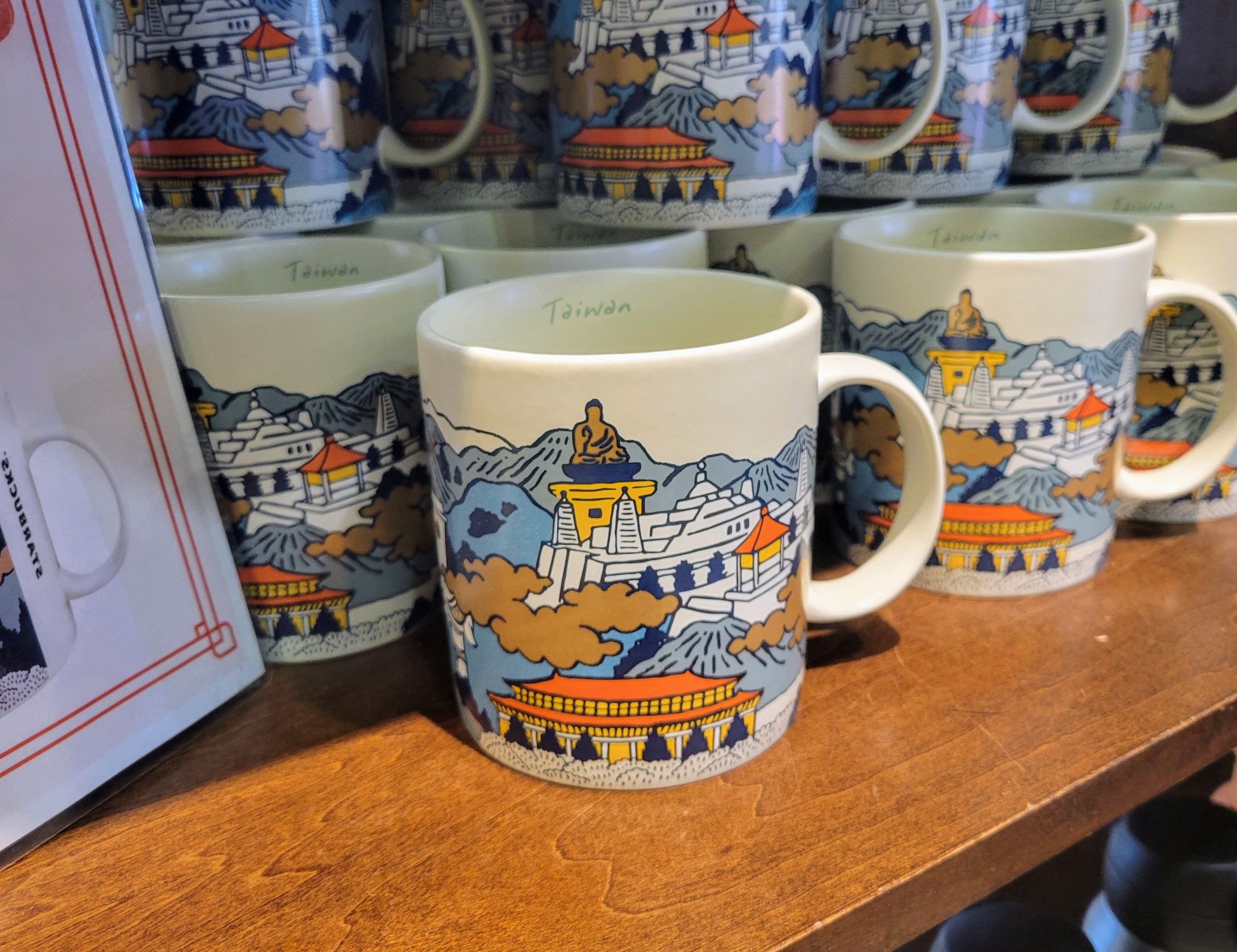
Next, you’ll find magnets and pins:
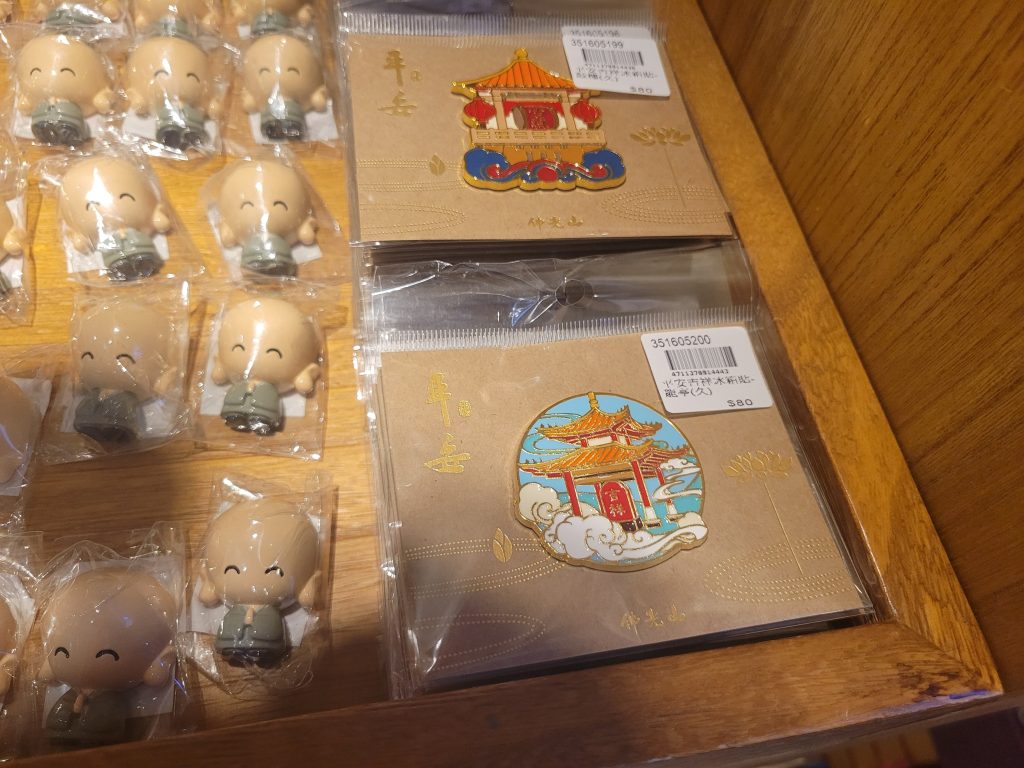
These make great souvenirs for anyone because:
- They’re small
- Well-designed
- Cheap (under NT$100)
- Fit in any backpack or luggage
Good luck charms are also excellent due to their size and price.
The only charms I know about are Omamori. They’re the ones in the lower-left corner that look like tea bags. These amulets ward off evil and bring good luck or wealth.

Another souvenir I loved (and actually bought) was a Taiwan-shaped keychain with Chinese characters.
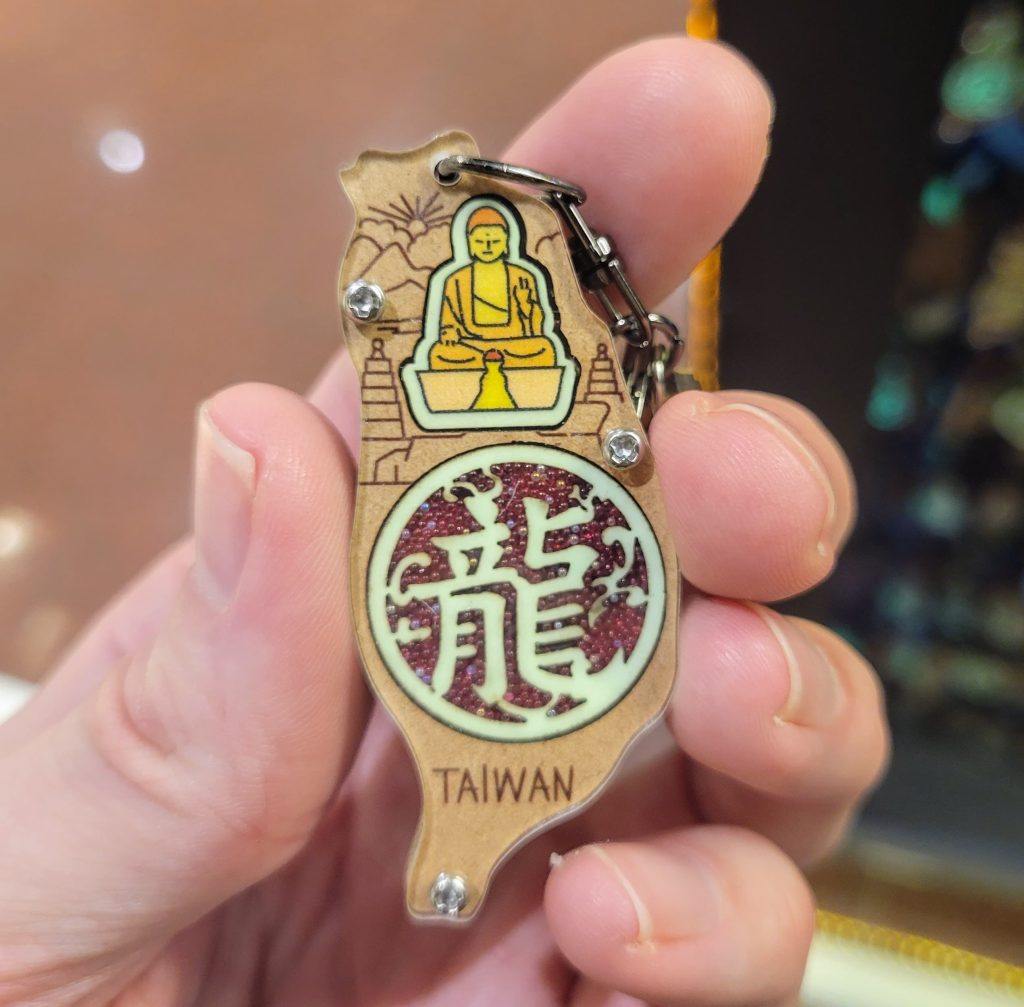
You’ll have to sift through A LOT of characters to find one you’d like.
I chose mine based on part of my Chinese name. Pick one based on yours, or just choose a character that looks cool.
Make sure you understand the character’s meaning before buying.
Anyway:
The last and coolest souvenir I found was the incense sticks and holders:
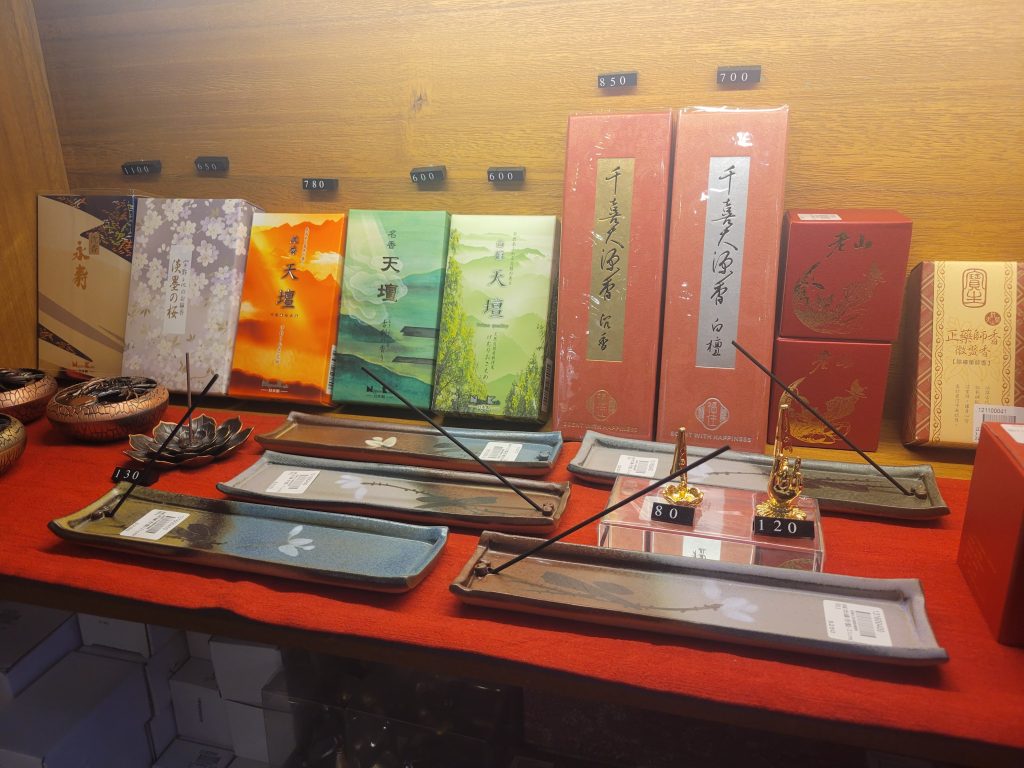
I consider these a more “premium” souvenir because of the cost. However, they’re small enough not to cause packing problems.
After shopping, you’ll probably want to eat.
What’s There to Eat?
There aren’t many restaurants here, except for some vegetarian places. There are no convenience stores.
Here’s one restaurant (we didn’t go there):
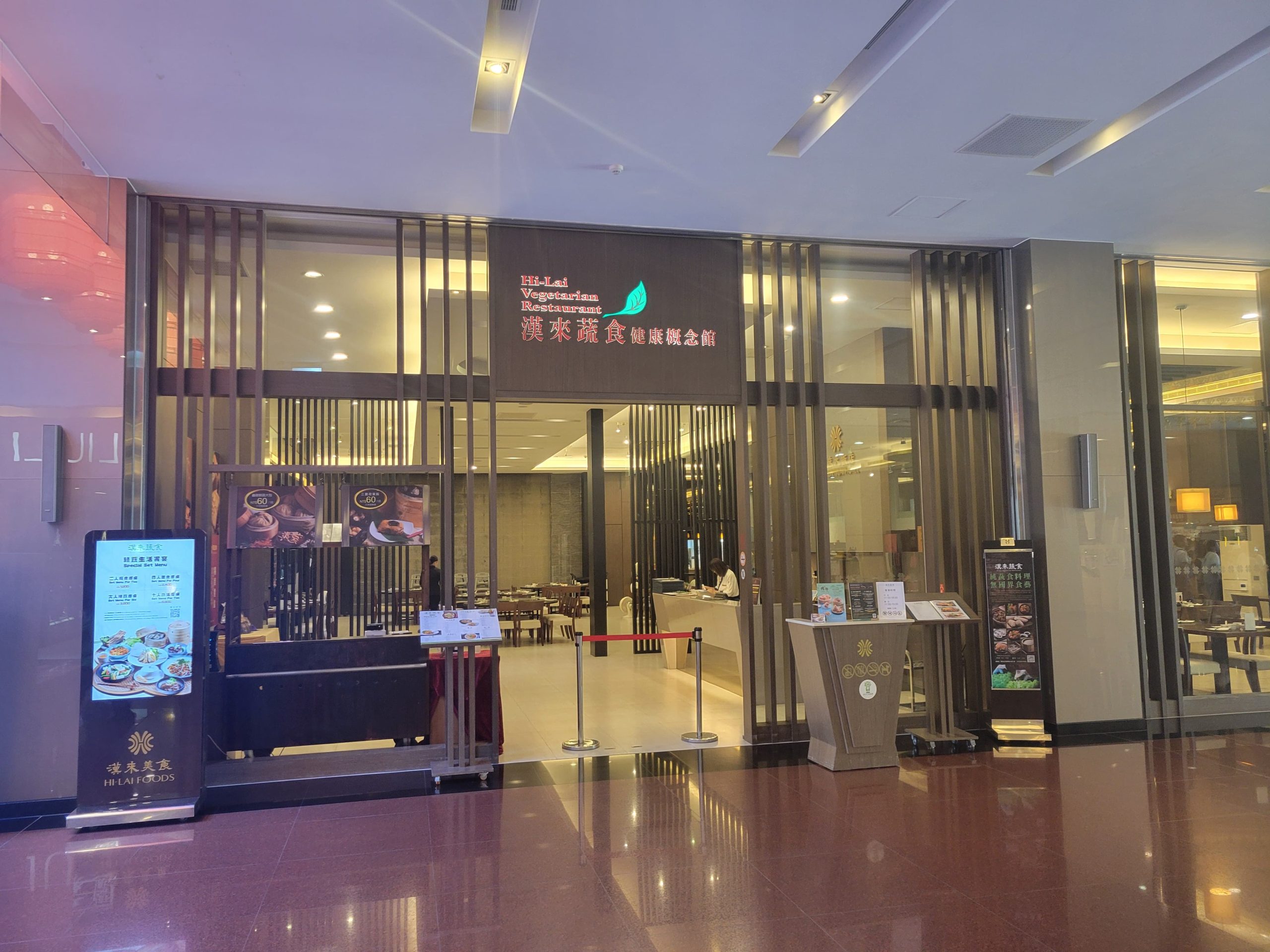
By the bus stop, you’ll find a place that sells deep-fried foods.
From what I remember, the food there wasn’t expensive.
Here’s important information to consider.
Important Information for Travelers
| Entry Fee | Free |
| Address | No. 153, Xingtian Rd., Xingtian Vil., Dashu Dist., Kaohsiung City |
| How Long to Spend Here? | 2 – 3 hrs |
| Dress Code? | None |
| Best Time to Visit | Weekday morning |
| Hours | Mon – Fri: 9 AM – 6 PM |
| Sat & Sun: 9 AM – 7 PM | |
| Chinese name | 佛光山; fó guāng shān |
Tips & Tidbits for Visitors
Here are some tips that I used and wish I’d have used when in Fo Guang Shan:
- Wear sunscreen: The sun is harsh when walking through the courtyard on hot days.
- Every restaurant and café (including Starbucks) here is vegetarian.
- Check the announcements for dates when the museum’s closed.
- It’s usually closed on Tuesdays.
- Many people here speak English.
- Don’t miss the tooth relic.
Let’s finish this off with other photos of the museum and FAQs.
Other Photos of Fo Guang Shan
FAQs
What is the Big Buddha in Taiwan?
The Big Buddha in Taiwan is Asia’s largest seated copper Buddha statue. Located at Fo Guang Shan Buddha Museum in Kaohsiung, it stands 108 meters tall. The statue holds a lotus mudra and varada mudra in its hands.
Is Fo Guang Shan a Buddhist Monastic Order?
Fo Guang Shan is a Buddhist monastic order founded in Taiwan in 1967. It practices Humanistic Buddhism and focuses on humanism, education, culture, and social welfare. The founder, Venerable Master Hsing Yun, is a leading figure in Taiwanese Buddhism.
How Big is Fo Guang Shan?
Fo Guang Shan spans over 100 hectares in Kaohsiung, Taiwan. It includes temples, shrines, a Buddha museum, and spaces for meditation, retreats, and education.
